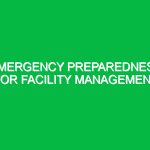Water safety is a crucial aspect of health, safety, and environmental (HSE) management. With the growing number of recreational activities and industrial uses of water, the risks associated with water exposure cannot be overlooked. Implementing effective safety protocols for water safety not only protects individuals but also ensures compliance with regulations and fosters a culture of safety. This article delves into the significance of safety protocols for water safety, identifies potential hazards, outlines safety precautions, and discusses relevant regulations and standards.
Understanding Safety Protocols for Water Safety
Safety protocols for water safety encompass a series of guidelines and practices designed to prevent accidents and injuries associated with water. These protocols are essential in various settings, including recreational areas, industrial sites, and residential pools. The relevance of these protocols in the HSE domain cannot be overstated; they aim to mitigate risks and enhance the well-being of individuals while ensuring operational efficiency. For instance, during my time volunteering at a local swimming pool, I witnessed firsthand how a lack of adherence to safety protocols led to a near-drowning incident. The experience underscored the importance of vigilance and regulation in preventing such occurrences.
Identifying Potential Hazards and Risks
Water environments can pose numerous hazards, which can be broadly categorized into physical, chemical, and biological risks. Understanding these hazards is the first step in developing effective safety protocols.
Physical Hazards
Physical hazards refer to dangers that arise from the environment or activities associated with water. These include:
- Drowning: Perhaps the most severe risk, drowning can occur in seconds, often without warning. Factors contributing to drowning include lack of supervision, inadequate swimming skills, and unexpected water conditions.
- Slips and Falls: Wet surfaces around pools or lakes can be slippery. Falls can lead to serious injuries, particularly among children and the elderly.
- Strong Currents and Tides: Natural water bodies often have unpredictable currents, which can sweep even the strongest swimmers away.
Chemical Hazards
Chemical hazards are associated with the use of water treatment chemicals, particularly in recreational and industrial settings. These include:
- Chlorine Exposure: Commonly used in swimming pools, chlorine can cause respiratory issues and skin irritations if not handled properly.
- Polluted Water: Water contaminated with industrial waste or biological pathogens poses significant health risks, leading to diseases.
Biological Hazards
Biological hazards involve microorganisms that thrive in water. Risks include:
- Waterborne Illnesses: Diseases such as giardiasis and cryptosporidiosis can be transmitted through contaminated water.
- Insect Bites: Mosquitoes and other insects breeding in stagnant water can transmit diseases like West Nile Virus.
Safety Precautions and Best Practices
Once potential hazards are identified, implementing safety precautions becomes critical. These measures not only protect individuals but also promote a culture of safety.
General Water Safety Guidelines
- Supervision: Always ensure a responsible adult supervises children in and around water. The presence of a lifeguard is also beneficial in public swimming areas.
- Swimming Skills: Encourage swimming lessons for children and adults alike. Knowing how to swim can be a lifesaver.
- Proper Signage: Clearly marked signs indicating depth, currents, and safety rules can prevent accidents.
Specific Safety Measures for Physical Hazards
- Emergency Preparedness: Equip facilities with rescue equipment, such as life rings and reaching poles. Training personnel in CPR and first aid is vital.
- Slip-Resistant Surfaces: Use non-slip materials around pool decks and other wet areas to minimize the risk of falls.
- Water Conditions: Regularly monitor the water conditions, including temperature and currents, especially in natural bodies of water.
Addressing Chemical Hazards
- Proper Handling of Chemicals: Follow manufacturer guidelines when using water treatment chemicals. Always use personal protective equipment (PPE) when handling hazardous substances.
- Regular Testing: Conduct routine water quality tests to ensure the safety of swimming pools and other recreational water bodies.
- Emergency Protocols: Establish clear protocols for chemical spills or exposure incidents, including immediate evacuation and decontamination procedures.
Mitigating Biological Hazards
- Regular Cleaning and Maintenance: Ensure that swimming pools and water facilities are regularly cleaned and maintained to prevent the growth of harmful microorganisms.
- Public Awareness: Educate the public on the risks of swimming in potentially contaminated waters, particularly after heavy rains.
- Insect Control: Implement measures to control insect populations around water bodies, using environmentally friendly methods whenever possible.
Regulations and Standards Governing Water Safety
Compliance with regulations and standards is essential for maintaining safe water environments. Various organizations and agencies have established guidelines to ensure water safety:
- Occupational Safety and Health Administration (OSHA): OSHA provides regulations regarding workplace safety, including safety protocols for employees working in or around water.
- American National Standards Institute (ANSI): ANSI outlines safety standards for swimming pools, spas, and other recreational water facilities.
- Centers for Disease Control and Prevention (CDC): The CDC issues guidelines for preventing waterborne illnesses and promoting safe swimming practices.
- Local Health Departments: Many local health departments enforce regulations regarding water quality and safety in public swimming areas.
Conclusion
In conclusion, the implementation of robust safety protocols for water safety is critical in the HSE domain. By thoroughly identifying potential hazards, enforcing safety precautions, and adhering to regulations, we can significantly reduce the risks associated with water. As someone who has seen the consequences of inadequate safety measures, I can attest to the importance of vigilance and preparedness in safeguarding lives. It is our collective responsibility to foster a culture of safety, ensuring that everyone can enjoy water activities without fear.


